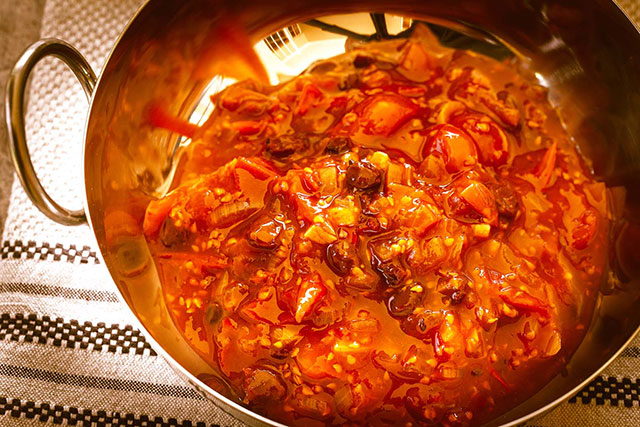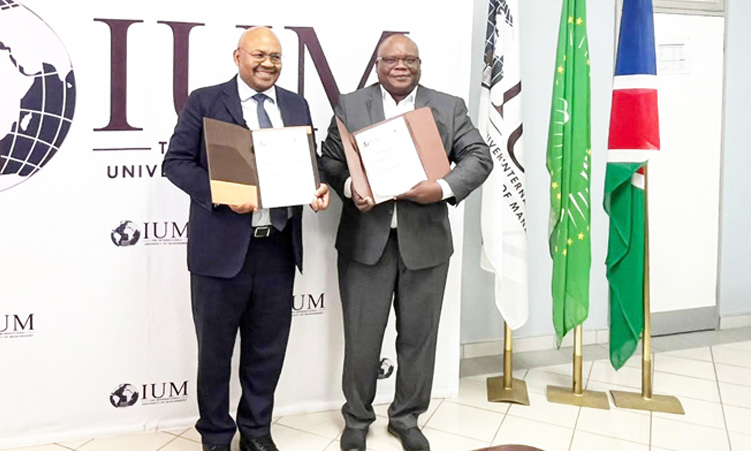Almost five months into the Covid-19 pandemic, and Namibia’s food landscape is changing. With the pandemic still quite some distance from its peak, this landscape is set to change even more. These changes will not be subtle, and they will be swift. In some cases, it will involve near-total destruction.
It will also present new opportunities to those who are creative, proactive and open to change. To those who can stay relevant, find new ways to add value, and turn their ships mid-stream, the post-Covid-19 foodscape will present exciting new opportunities much like the fresh green sprouting veld after the fire.
Restaurants are among the worst-affected businesses. Many have closed down permanently and many more will do so during the next few months. Those who relied on international tourism for their income will most likely not make it. Not in their current format. By now they would have realised that the local market will never be able to replace the international one, and take-aways will not begin to cover the operating costs of a mammoth 200-seater. A traditional dine-in restaurant and a take-away shop require very different business models, and for those who could not figure out how to make the transition between the two, big trouble is looming.
Those who have a loyal local support base may still be okay provided they have their operating costs under control. But that may also not last very long as rent holidays will expire, and clients may have changed their behaviour due to reductions in income and Covid-19 fear. And then there are the nagging niggles of insufficient cash flow and growing debt.
Traditional restaurants consist of two parts: the kitchen and front of house. Both have their own staff, tasks and most importantly, costs. Patrons are received and served by front of house staff, while the kitchen prepares the food. Income from front of house comes mainly from the bar and alcohol served. Tips are not income; it supplements the wages of the staff.
Food costs are charged against the kitchen, and equipment and maintenance are major expenses in setting up and maintaining a kitchen. Front of house requires funding for cutlery and crockery, glasses, tables and chairs, décor and a plethora of other minor but regular expenses. Its job is to draw people into the restaurant while the food from the kitchen must keep them coming back.
With few restaurant owners owning the property that their restaurants are located in, and with rental rates as high as they are in our capital city, monthly rent in decent locations combined with labour costs makes it very difficult to increase already thin margins in the traditional restaurant business model.
There is a growing trend worldwide to abandon the traditional restaurant business model that requires the client to visit the establishment.
In the new thinking, ‘if the mountain will not come to Muhammad, then Muhammad must go to the mountain’ prevails.
Welcome the Ghost Kitchen.
Ghost kitchens – also known as dark kitchens, virtual kitchens, delivery kitchens, shadow kitchens, commissary kitchens, or cloud kitchens – is the culinary world’s response to increased demand for food deliveries and the explosion of food delivery platforms such as UberEats.
Ghost kitchens are professional food preparation and cooking facilities (i.e. kitchens) that prepare delivery-only meals. It has no front of house and thus no walk-in dining. It is only one half of the traditional restaurant, and the kitchen is placed in affordable locations – even if such locations are deemed unsuited for traditional walk-in dining.
Ghost kitchens prepare and serve food for several ‘virtual restaurants’ or ‘restaurant brands’. Customers place their orders and make their payments via a delivery platform, or via the ghost kitchen’s own app or website, and enjoy their meal at home.
Ghost kitchens are much cheaper to set up and run than traditional restaurants, and they provide greater safety to customers. They are already big business in the USA and Europe and have attracted major investments in a difficult time for investors.
They are also becoming a feature in Asia, and the groundwork has been laid in South Africa.
The traditional restaurant model, in my view, has had its days and should now be reconsidered. Ghost kitchens are but one new option. Are we ready to embrace the change?
• 2 kg cherry tomatoes
• 1 cup sugar
• 250 g sultanas
• 12,5 ml mustard
• 2 medium onions, finely chopped
• 2 cups white wine vinegar
• 1 teaspoon ginger (ground)
• 1 tablespoon salt
• 3 cloves garlic, grated
Remove the stalks from the tomatoes. Wash thoroughly. Add all the ingredients to a large heavy-bottomed pot set over medium-low heat. Cook until the mixture thickens, for about 60 to 90 minutes. Take the pot off the stove once the chutney reaches the desired consistency. Don’t mind if some of the tomatoes remain whole, it makes for an interesting texture. Let the mixture cool down before transferring it to sterilised bottles. Seal and store in the refrigerator.
Stay informed with The Namibian – your source for credible journalism. Get in-depth reporting and opinions for
only N$85 a month. Invest in journalism, invest in democracy –
Subscribe Now!






